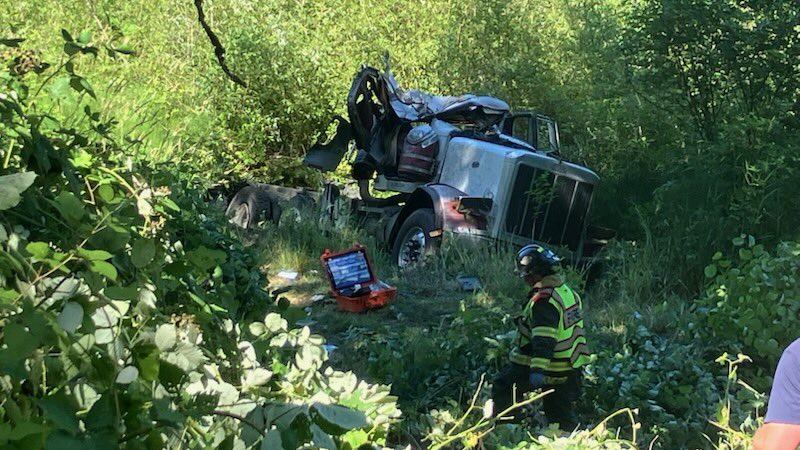SEATTLE — If you were to walk into an emergency room today, you would find a system in crisis, with patients left to wait hours for critical care they desperately need.
Jayne Anastasi knew something was wrong with her eye. But she didn’t know that she’d soon spend 19 hours waiting for care at her local hospital.
“I was driving to the YMCA and noticed my peripheral vision was blurry, and I thought maybe I was just tired or something put up with that all day, went to bed,” said Anastasi. “And when I got up the next morning, I got out of bed and walked into the wall.”
She knew it was time to see her doctor.
“So that’s when my fun began, my 19-hour marathon,” said Anastasi.
Anastasi checked into a full waiting room at Providence Medical Center in Everett at around 3 p.m.
It took two hours to get her bloodwork done, and it would be many more hours before she would know her results.
“I sat there for six hours … no food, no water. Just sitting there,” said Anastasi. “Those hours went by, and we’re waiting on my results and they’re on MyChart, so I showed the doctor. She was surprised they had been posted and said, ‘I’ll be right back,’ and I never saw her again.”
As the hours tolled and frustration mounted, Jayne decided to head home. Because of a cancellation, she got in with a neurologist the next day.
“It was determined it was a stroke. I’ve never had a stroke before,” said Anastasi. “Is this going to get worse? Is it going to come back? I still don’t know.”
Dr. Arooj Simmonds is Chief Medical Officer for Providence Swedish, the system that includes the same hospital Anastasi spent 19 hours waiting in an emergency room.
He said he was both surprised and unsurprised to hear about what Anastasi experienced at the hospital that day.
“This is the reality of what we’re facing day in day out,” said Simmonds. “For this woman, we hear her and we feel awful. We carry that burden, too, for her.”
The frustration isn’t only felt by patients – health care workers across Western Washington have been feeling the strain too.
“People are crying, they’re confused,” said Heather Rhodes, a travel nurse with 24 years of experience. “Elderly, they don’t know why they’re there and don’t know why they’re isolated in that room.”
Rhodes says she’s worked both sides of the state through the pandemic and right now is the worst time to need our health care system.
“It’s a terrible breakdown in the system. We are offering them nothing but a closed door, meds, and meals, and a social worker,” said Rhodes. “It’s terrible.”
So what’s causing the breakdown?
“At first, we were empty. People were afraid of us. ‘Oh, they’ve got COVID there, nobody go there, nobody go in,’” said Rhodes. “But the real sick people didn’t come either, and so those real sick people are really sick now and we’re trying to catch them up and it’s even harder.”
Health care leaders agree it’s a combination of factors:
- An influx of patients who delayed care to avoid COVID
- A shortage of workers, who are now weighing if they’ll stay in the industry
- A lack of beds to place patients healthy enough to leave the ER but still requiring care
- People relying on emergency care as a catchall for healthcare
“For some people, we’re their only option. We’ll see them for ingrown toenail, medication refills, or because they have no access,” said Rhodes.
She says these issues have a cost, and, in some cases, the price is human lives.
So what’s the solution?
“They need to build more hospitals, bring more staff in. It’s a toxic system. It’s been a toxic system for a very long time and COVID, we saw the worst of it,” said Rhodes.
For Rhodes, this stress means looking at new opportunities outside of emergency medicine.
As for Anastasi, she just wants someone to listen.
“I don’t blame the doctors and the nurses. I blame the situation,” said Anastasi. “There has to be a light on the situation.”
©2022 Cox Media Group







